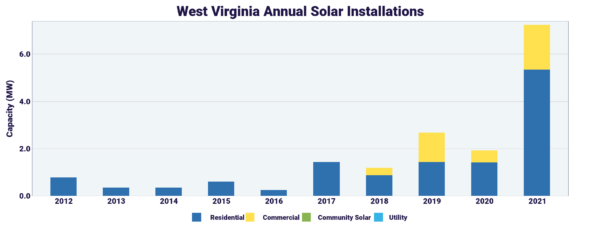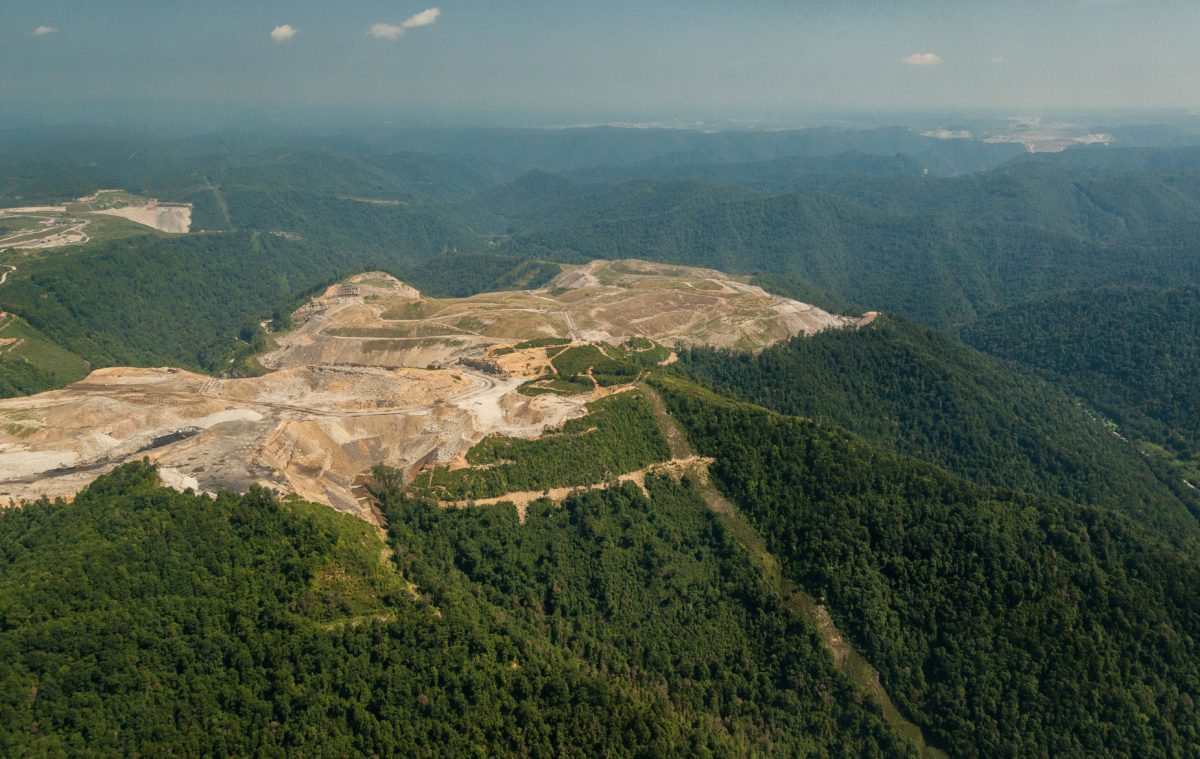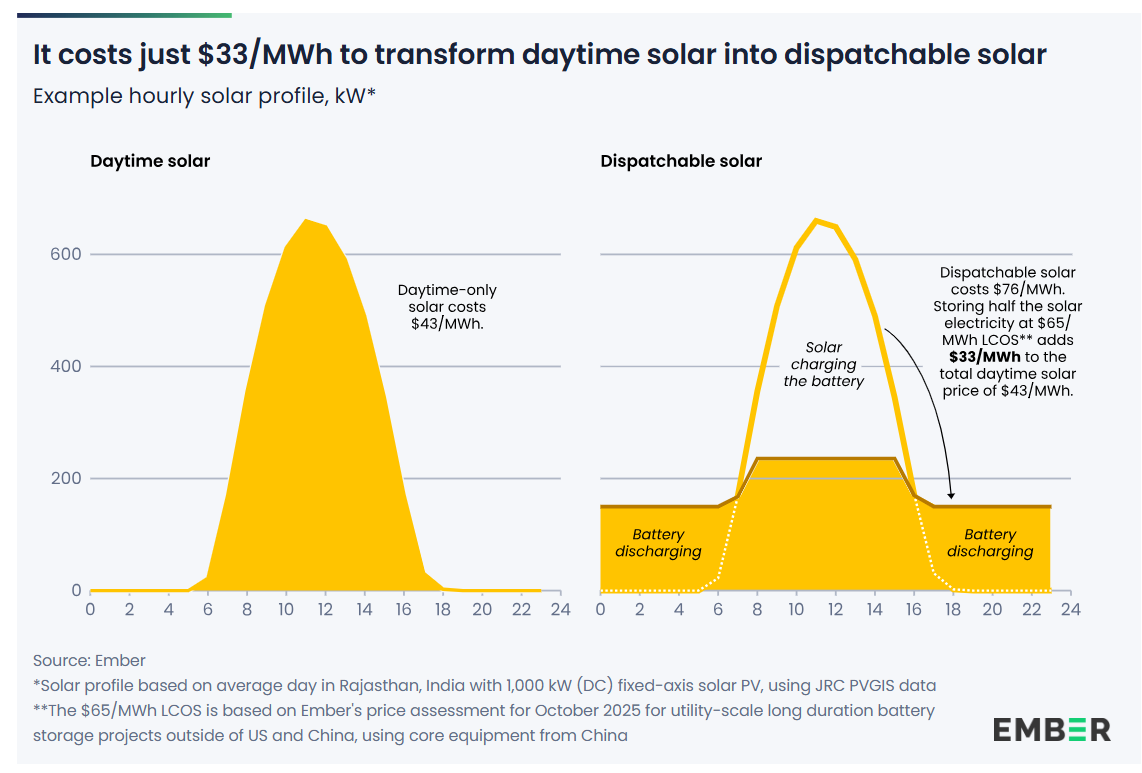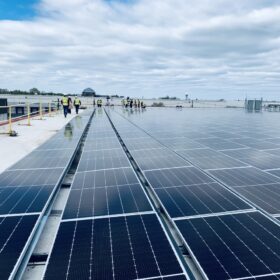The pv magazine USA tour of solar incentives state by state now takes us to our third stop in the south Atlantic states: West Virginia.
According to the U.S. Energy Information Administration (EIA), West Virginia was the second-largest coal producer in the nation in 2020 and accounted for 13% of U.S. total coal production, and coal accounted for 88% of the state’s electricity net generation. West Virginia also produces a lot of natural gas. In 2020 it was ranked fifth in the nation for natural gas production, with 95% of it coming from shale wells. And while some parts of the country are weaning themselves off of fossil fuels, natural gas production in West Virginia has increased tenfold in ten years, amounting to nearly 2.6 trillion cubic feet in 2020. With a zest for fossil fuels, the state’s total crude oil production reached an all-time high of 20 million barrels in 2020, also more than 10 times greater than a decade earlier.
As far as clean energy use goes, hydroelectric and wind provided about 6% of West Virginia’s energy needs in 2020, according to EIA, while solar provided only .04%, according to the Solar Energy Industries Association (SEIA).

With only 20 MW of solar installed, West Virginia is currently ranked 48th in the nation for solar energy installations. But it doesn’t have to be this way. The Nature Conservancy (TNC), a global environmental organization headquartered in Arlington, Virginia, sees West Virginia as a prime location for future solar development. “As the world transitions to a low-carbon future, solar energy is an important opportunity for West Virginia to continue serving as a domestic energy powerhouse,” Eriks Brolis, the director of TNC in West Virginia’s Nature and Economy Programs, told pv magazine.
The Environmental Protection Agency has long recommended that Superfund sites, such as abandoned mines, are appropriate for renewable-energy projects. Investing in renewable energy can lead to strengthening and diversifying West Virginia’s economy, according to the report West Virginia’s Energy Future, issued by the Center for Energy and Sustainable Development at the West Virginia University College of Law. The report concludes that continued dependence on coal has many downsides economically, environmentally, and from a health standpoint, while a move to renewables has many benefits, just a few of which include job creation, a diversified economy, and health.
Solar policy
In 2020 the West Virginia legislature passed SB583 for the further development of renewable energy resources. The Database of State Incentives for Renewables and Efficiency (DSIRE), maintained by the NC Clean Energy Technology Center at North Carolina State University, also lists the 2012 legislation (HB 2740) that restricts homeowners associations from prohibiting solar energy systems on homes, although it leaves the door open for associations to vote to prohibit or restrict solar use.
Joe Manchin, Senator from West Virginia, thwarted efforts to pass the initial Build Back Better climate plan, but he was instrumental in the passage of the Inflation Reduction Act of 2022. Despite the fact that the ACT contains $370 billion in spending for renewable energy and climate measures, the Act provides further investments in fossil fuels—a fact that Manchin touts on his website:
… The Inflation Reduction Act of 2022 invests in the technologies needed for all fuel types – from hydrogen, nuclear, renewables, fossil fuels and energy storage – to be produced and used in the cleanest way possible. It is truly all of the above, which means this bill does not arbitrarily shut off our abundant fossil fuels. It invests heavily in technologies to help us reduce our domestic methane and carbon emissions and also helps decarbonize around the world as we displace dirtier products.
The tide may be turning
But there is hope, and the tide may be turning. While West Virginia is not home to any currently operating utility-scale solar installations, when EDF Renewables’ 92.5MW Wild Hill Solar project is complete, it is expected to be the largest in the state. It will then be eclipsed by a 250 MW project by SEVA WV, to be built on the site of a former coal mine. Total project cost is estimated at around $320 million, which is considerably more than the $54 million in total solar investment in the state previously, according to the SEIA. FirstEnergy Corp., a utility serving West Virginia, recently announced that it will permanently retire a coal ash facility will build a 6 MW site as part of a larger 50 MW solar portfolio.
Last time, the pv magazine tour of the 50 states of solar took us to Maryland, and next we will continue to travel through south Atlantic, stopping off in Virginia.
This content is protected by copyright and may not be reused. If you want to cooperate with us and would like to reuse some of our content, please contact: editors@pv-magazine.com.









Very good quality content. Writing to get more updates from you.